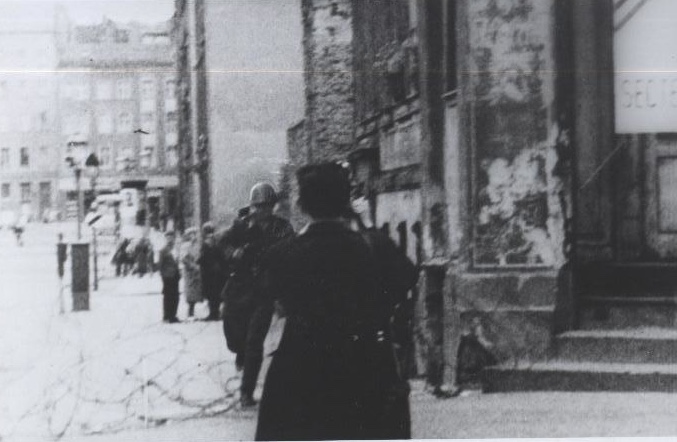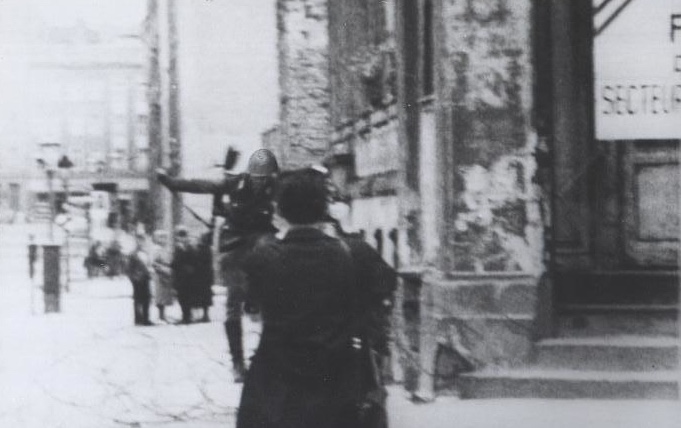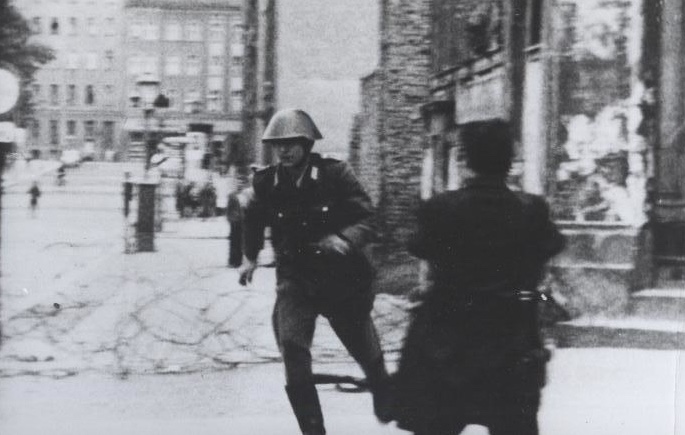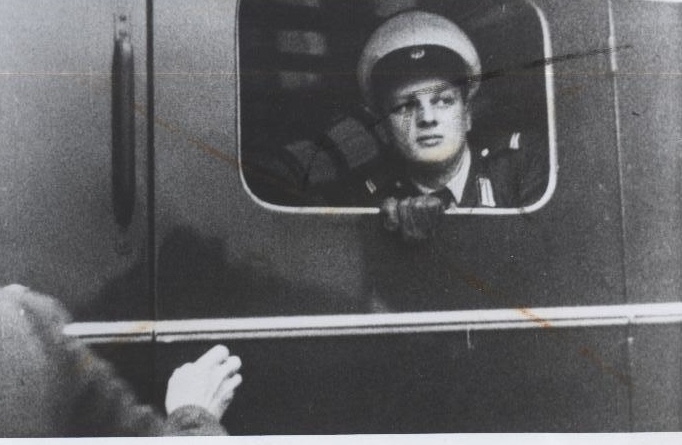Wenn man ihn nach dem ikonischsten Foto des Kalten Krieges fragt, denkt man wahrscheinlich an einen ostdeutschen Offizier, der über einen Stacheldrahtzaun in die Freiheit springt. Aber kennen Sie den Namen des abgebildeten Mannes (Conrad Schumann) oder was ihn zu einer solch potenziell lebensgefährlichen Entscheidung bewogen hat? Nun, Sie haben Glück, denn wir haben die Details.
Conrad Schumanns frühes Leben und seine Einberufung

Hans Conrad Schumann (manchmal auch als Konrad Schumann geschrieben) wurde am 28. März 1942 in Sachsen geboren. Sowohl während als auch nach dem Zweiten Weltkrieg in der Region aufgewachsen, absolvierte er zunächst eine Lehre als Schäfer. Er erkannte jedoch, dass er mit dem Eintritt in die DDR-Polizei mehr Geld verdienen würde und wechselte mit 18 Jahren.
Schumann trat in die Volkspolizei-Bereitschaften, den paramilitärischen Flügel der Volkspolizei, ein und wurde nach dreimonatiger Ausbildung in Dresden an die Unteroffiziersschule in Potsdam geschickt. Es dauerte nicht lange, bis er sich freiwillig nach Ost-Berlin schickte.
Monitoring the border between East and West Berlin

On August 15, 1961, construction on the Berlin Wall entered its third day. The concrete expanse we’ve come to associate with the wall didn’t yet exist, and the border between East and West Berlin was marked only by a barrier of barbed wire.
That morning, Conrad Schumann, then 19 years old, was stationed at Ruppiner Straße and Bernauer Straße. He and his comrades had been told to “take control and protect the border from the enemies of socialism,” a command that became increasingly harder to follow, as West Berliners began to gather and shout insults at the Bereitschaftspolizists.
As the day went on, Schumann became more and more distressed over his situation, and his concern only grew when he saw a girl hand her mother flowers over the concertina wire border – the two lived on different sides of Berlin and could no longer visit each other. Schumann later recalled this scene made him feel a sense of dread and led to the realization that he, like others in the East, were prisoners.
When noon came around, the crowd of demonstrators in West Berlin had grown even bigger. As they rushed toward those on the other side of the barrier, Schumann recalled feeling nervous. “[I] didn’t know what to do,” he explained later in life. “I didn’t want to shoot and I wasn’t supposed to.” Thankfully, extra officers arrived on scene to break up the group, before he had to take action.
Conrad Schumann makes his escape

As the hours progressed, equipment, supplies and workmen began to arrive at the scene; they were looking to continue work on the Berlin Wall. Conrad Schumann knew it was now or never, as the more people around, the more difficult it would be to jump without any interference.
Prior to his escape, Schumann swapped out his loaded PPSh-41 submachine gun for one without bullets. He then began stamping down the barbed wire in his vicinity, an act that caught the attention of a man in West Berlin. Not wanting to draw any suspicion, Schumann acted like any other Bereitschaftspolizist, shouting, “Get back at once,” before lowering his voice and explaining to the man, “I’m going to jump.”
This declaration prompted the West Berliner to contact the authorities, who drove a police van to the scene.
At around 4:00 PM, Schumann noticed his comrades weren’t paying attention and made the jump. He leaped over the barrier, dropped his PPSh-41, and ran through Ruppiner Straße and Bernauer Straße. He then boarded the van and was taken away to safety.
Who captured the history-defining moment?

Most people know of Conrad Schumann’s risky leap of faith thanks to West German photographer Peter Leibing, who happened to be in the right place at the right time. The image he captured became known as Leap into Freedom. The scene was also caught on 16 mm film by camera operator Dieter Hoffmann.
Leibing’s photograph went on to become one of the most iconic of the Cold War, serving as a visual reminder of the risks those living in East German had to take to reach freedom. In May 2011, the image, along with several other documents, was inducted into UNESCO’s Memory of the World program.
Conrad Schumann struggled later in life

While Conrad Schumann was able to put together a new life in the West, complete with a wife, a son and a decades-long career with Audi, he struggled with being away from the life he knew in East Germany. He wasn’t able to visit his family, meaning the former Bereitschaftspolizist could only communicate with them via letters. Unfortunately, the responses he received were often influenced by the East German Police, who wanted to lure him back for punishment.
On top of this, Schumann lived in fear of the Stasi (East Germany’s version of the Soviet KGB) coming to assassinate him, which didn’t help with his mental health. He eventually fell into a depression, turning to alcohol to help numb the pain.
It wasn’t until the fall of the Berlin Wall in November 1989 that Schumann began to feel as if he had any semblance of freedom, with him saying at the time, “Only since 9 November 1989 have I felt truly free.” He was finally able to visit his family, but this reunion didn’t go as planned, with his loved ones shunning and calling him a traitor.
